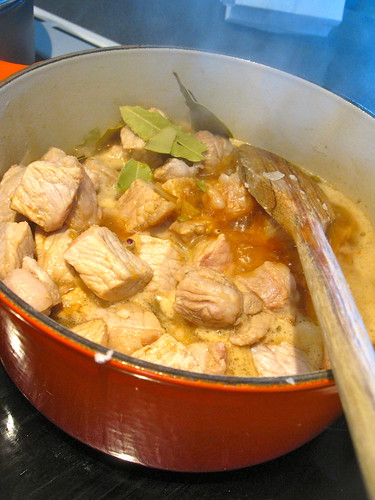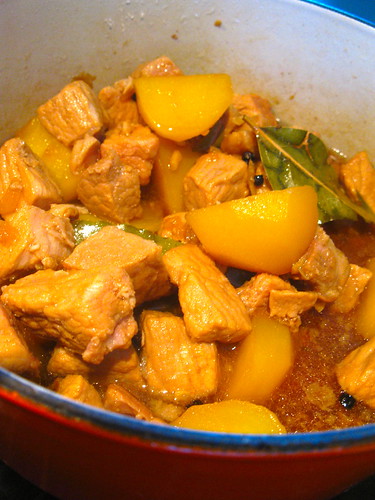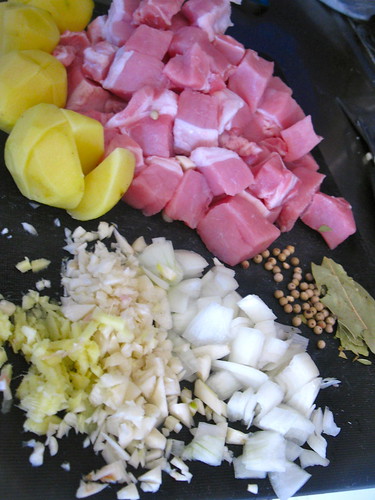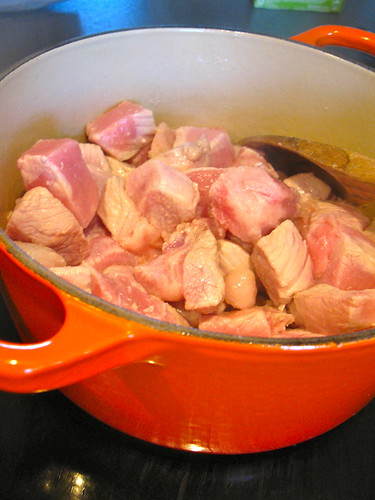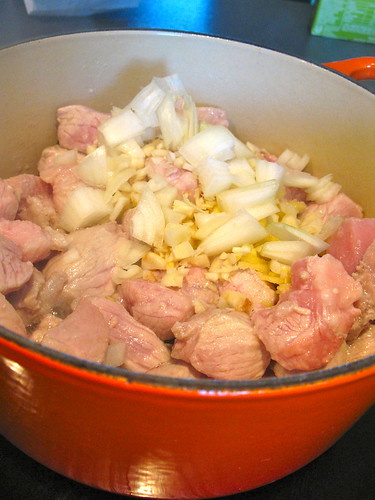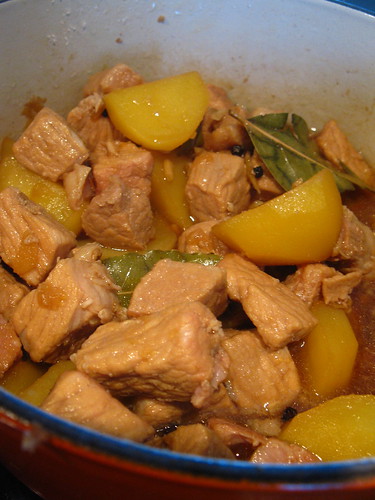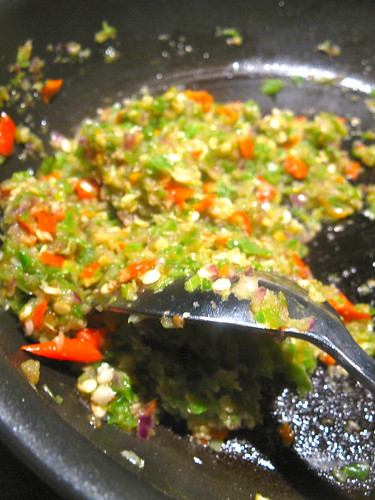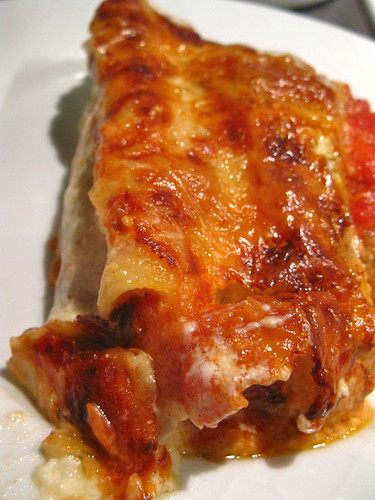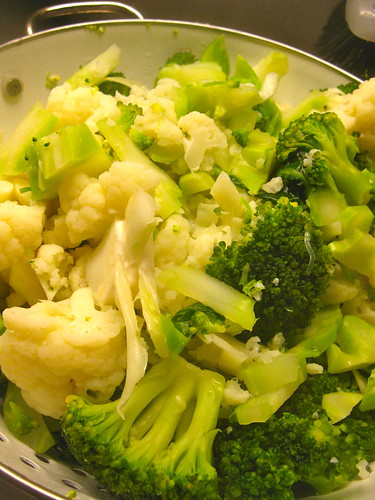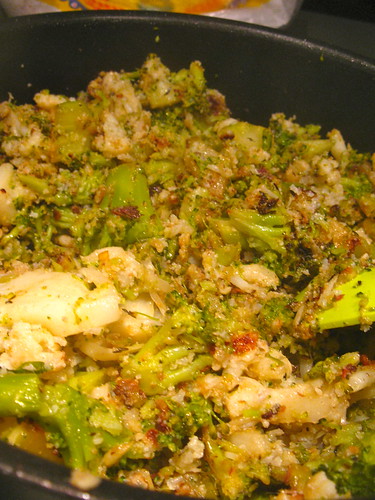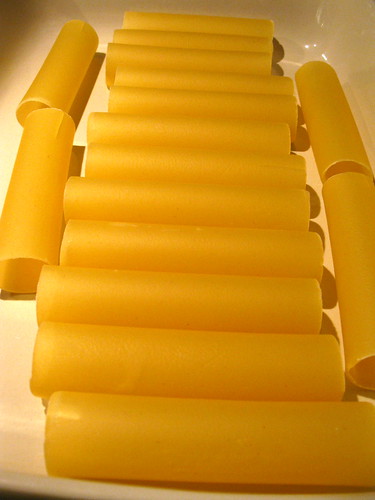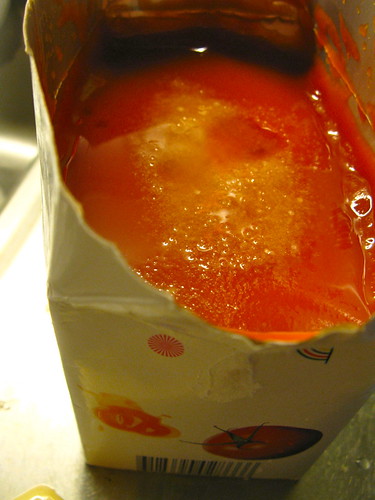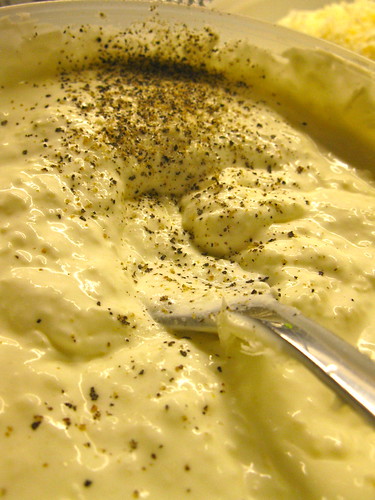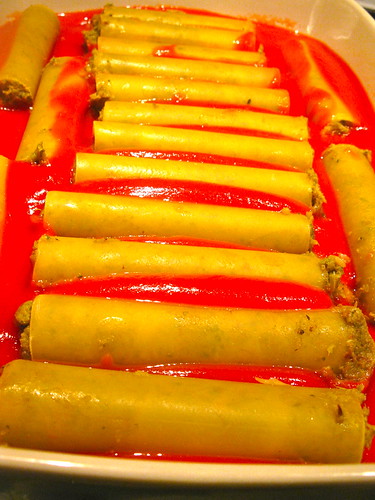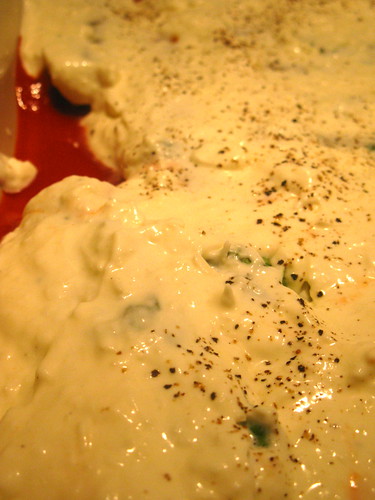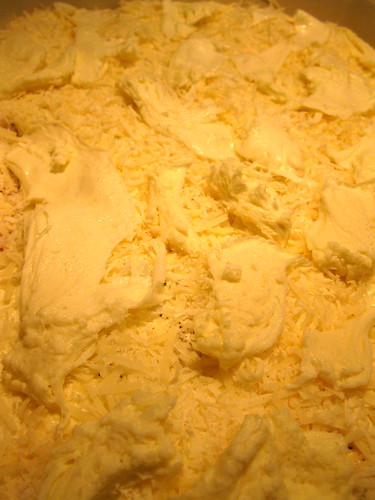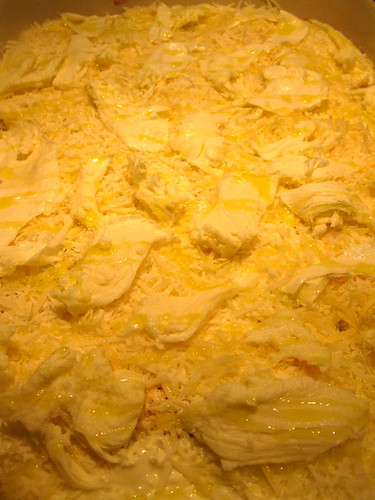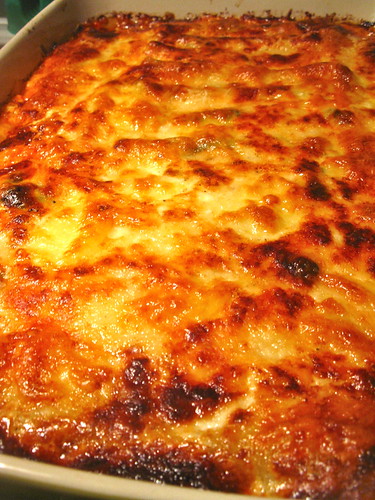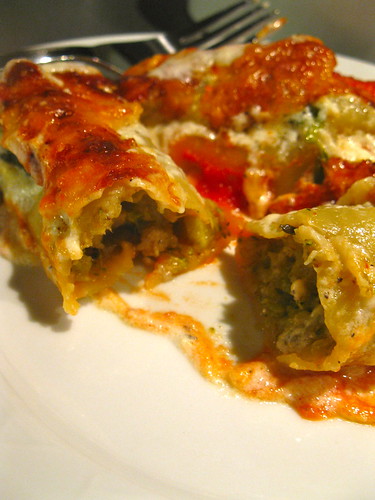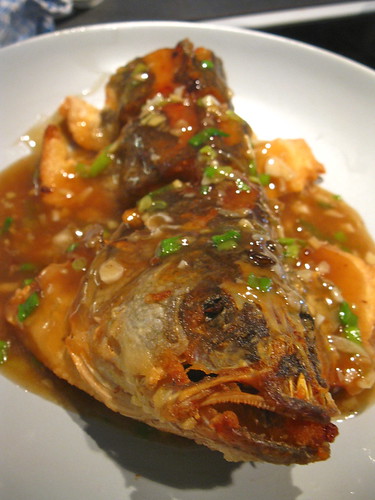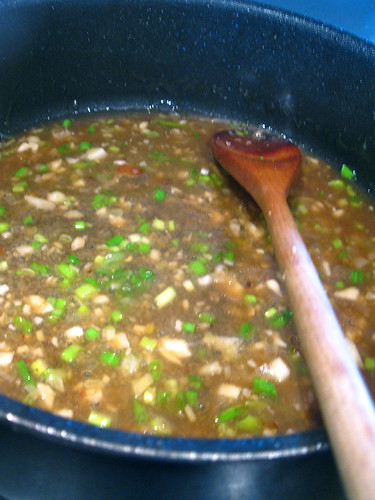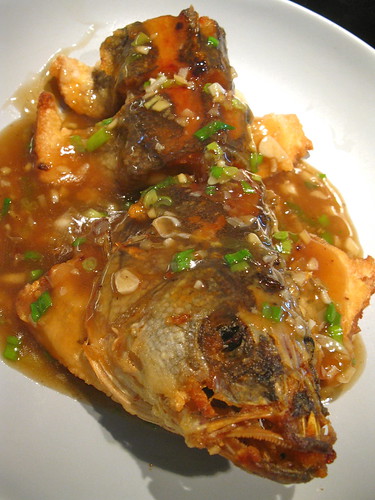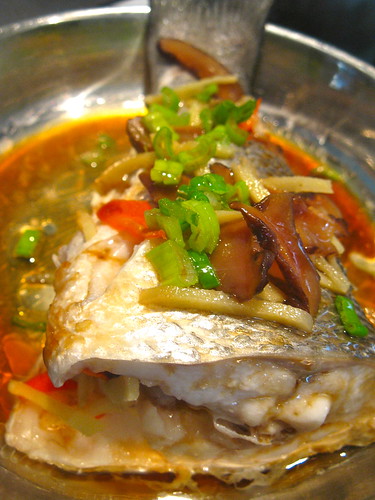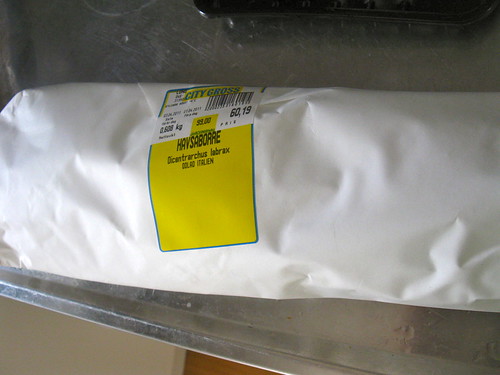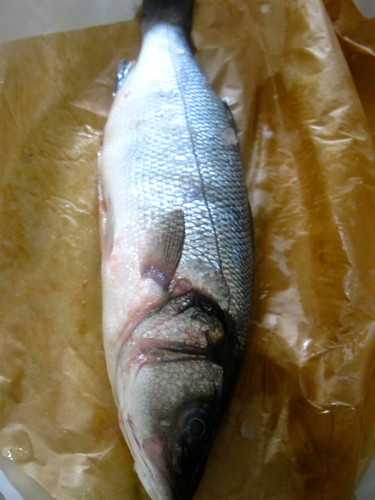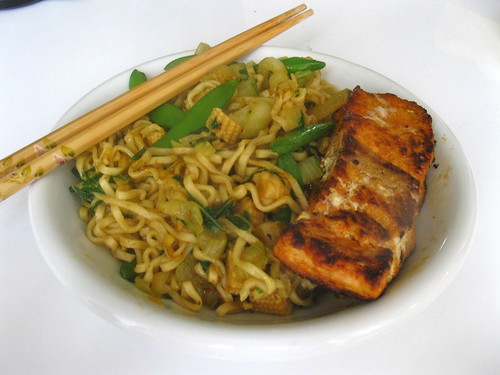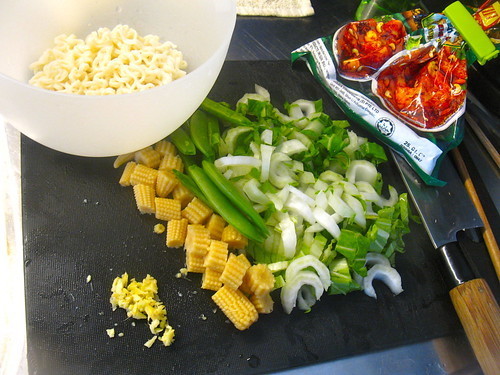Bwah! I'm crispy and delicious - Eat me!
Ok, I'm just having some fun with the captions. You should see the fish my Dad caught, it would have been perfect for this dish!
The fish my Dad caught one of those weeks
, photo courtesy from my sister
Back to this - this was the other half of the fish from my previous post. It would have been prettier making the whole fish but it was my first try, and it's always wise to start kinda of small. This is from Fushia's other book, which is equally good and definitely something you can aim to make for your next Chinese New Year dinner as she commented, it's a real party piece! This recipe was for the whole fish but I halve it for my half-a-seabass.
Ingredients
1 seabass (about 500-600g including the head, gutted and cleaned)
Plenty of cooking oil for deep frying
Marinade with
1 tablespoon Shaoxing wine
3/4 teaspoon salt
2 spring onions, white and green parts
2 inch piece fresh ginger, unpeeled
For the sauce
1 tablespoon light soy sauce
4.5 tablespoons sugar
2 teaspoons Shaoxing wine
1/4 teaspoon salt
4 teaspoons cornstarch
3 tablespoons chicken stock (I used a chicken stock cube to dissolve in hot water accordingly and use from it accordingly)
3 teaspoons finely chopped fresh garlic
3 teaspoons finely chopped fresh, peeled ginger
4 spring onions, finely sliced, white and green parts separated
1.5 cups stock
3 tablespoons black Chinese vinegar
2 teaspoons sesame seed oil
For the starch coating
3/4 cup cornstarch (yes that much, with some extra on hand)
Steps
- 'Lay the fish on its side and using a sharp knife, cut down into the thickest part of the fish near the backbone, about 2 inches from the base of the fish head and at right angle to the backbone itself. When the knife touches the bone of the spine, swivel the blade inside the flesh to face the head and continue cutting parallel to the backbone and toward the head for about another 1.5 inches. This will create a thick flap of fish flesh.' This is taken word for word from her book and it's really good detailed instructions. Continue making the same cuts at 2 inch intervals until you reach the tail and repeat on the other side. Be careful not to slice the whole flap of fish off!
- Pour the Shaoxing wine over the fish and rub it and the salt into the flaps and cavity also to marinade. Roughly chop the ginger and spring onions and stuff into the cavity and flaps of the fish to marinate for about 30 minutes while you prepare the other ingredients.
- For the sauce, combine the soy sauce, sugar, wine, salt, cornstarch and stock in a small bowl and set aside.
- For the starch solution that will be used to dredge the fish in, mix it with enough water gradually (should be around 1/2 cup) so it is fairly thick but drippy.
- Heat the oil till about 162°C to prepare to fry the fish. Remove the ginger and spring onion bits and pat dry with paper towels before smearing it with dry cornstarch (about 3 tablespoons) inside and out.
- Hold the fish by the tail and coat it with the cornstarch paste, using your fingers if necessary to spread it in between the flaps. Hold it by the tail and lower the fish head first into the oil to let it fry for a few minutes as you ladle hot oil over the body and flaps of the fish to fix the position of the fish in its place. Immerse the whole fish when the flaps are in open position and fry for another two minutes. Remove and let it rest on its belly on a plate.
- Reheat the oil to 200°C and immerse the fish again to fry for a few more minutes until the whole fish is crispy and golden. Remove it, drain it of oil and set aside while you prepare the sauce.
- Using about 3 tablespoons oil from the frying in a clean wok, heat it up over high flame and add in the ginger, garlic and white spring onion sections until fragrant. Add in the stock and bring it to boil.
- Give the sauce ingredients a stir before pouring adding it to the wok, it should thicken fairly quickly. Turn off the heat and add in the spring onion greens, vinegar and sesame seed oil into the sauce and pour it over the fish and serve.
